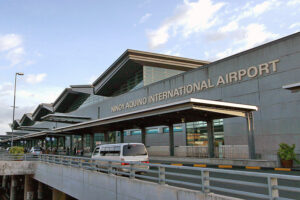-
GMR Infrastructure will have a 40% equity participation in Ninoy Aquino International Airport (NAIA) rehabilitation project with Megawide Construction
-
Megawide assures it can finance all phases of NAIA rehabilitation project
-
Megawide said GMR has not abandoned their consortium and is still a partner in the NAIA project and the Mactan-Cebu International Airport operation

India-based GMR Infrastructure Ltd. will have 40% equity participation in rehabilitation of the Ninoy Aquino International Airport (NAIA), a project it will undertake with Megawide Construction Corp.
The two parties agreed on this equity partnership on November 11, Megawide said in a regulatory disclosure.
On the same day, Megawide clarified a news report, reiterating its financial fundamentals are strong and it “possesses the capability to fully finance all proposed phases of the NAIA rehabilitation project.”
“Megawide’s prudent financial management plan ensures all phases of a complex infrastructure build are fully financed under a project financing program,” the company said.
Megawide earlier also rebutted claims, saying GMR has “not abandoned Megawide” and in fact continues to be a part of the consortium for the NAIA project as partner operator.
GMR also continues to be Megawide’s equity partner in the operation of Mactan-Cebu International Airport (MCIA). The tandem, through GMR-Megawide Cebu Airport Corp., won in 2014 a 25-year concession to manage and develop MCIA. The tandem in 2017 also won the contract to engineer, procure, and construct the Clark International Airport (CIA) expansion project.
Megawide said it is “the only company in the Philippines to successfully design, engineer, construct and deliver new, world-class international airports” in the country in recent years, including the internationally awarded MCIA and newly completed CIA.
“Megawide intends to deliver a world-class transformation of the NAIA complex in the same transparent manner, with the highest degree of excellence and government procurement compliance,” it said.
Megawide and GMR had submitted in 2018 an unsolicited proposal to decongest and rehabilitate NAIA at an estimated cost of US$3 billion (about P156 billion).
The Megawide-GMR consortium last July was granted original proponent status (OPS) to develop NAIA after the government terminated negotiations with NAIA Consortium, which had also proposed to rehabilitate the country’s main gateway.
Last August, however, the Department of Transportation (DOTr) said the Megawide-GMR consortium still needed to address issues on its financial capacity and joint liability for the project to proceed.
READ: NAIA project pending Megawide-GMR compliance with BOT Law
The National Economic and Development Authority-Investment Coordination Committee (NEDA-ICC) also noted a number of pending compliance by the consortium with certain requirements of the Build-Operate-Transfer Law.
DOTr said the project is still for evaluation and approval of NEDA-ICC.
READ: NAIA expansion project not yet awarded, says DOTr
If approved by the NEDA-ICC and then the NEDA Board, the unsolicited proposal will undergo a Swiss challenge wherein other interested parties can make counter proposals, which the consortium, as the original proponent, can then match.
The consortium’s proposal has a concession term of 18 years and includes investment in all airside, terminal, and landside improvements. The project is divided into three main phases: Phase 1a (year 1-2), Phase 1b (year 3-4), and Phase 1c (year 5-6).
Phase 1a includes improving NAIA’s airside capacity and implementing terminal improvements, while Phase 1b is “taking NAIA to world-class efficiency standards by introducing key performance measures.” Phase 1c involves building future capacity.
The consortium earlier said it would, immediately after takeover, enhance the capacity of the airside infrastructure by constructing full-length parallel taxiways for both runways; constructing additional rapid-exit taxiways for the primary runway; extending the secondary runway; and providing the maximum number of aircraft stands.
Once completed, both airside facilities and terminals would be able to handle a total annual throughput of 72 million passengers.





